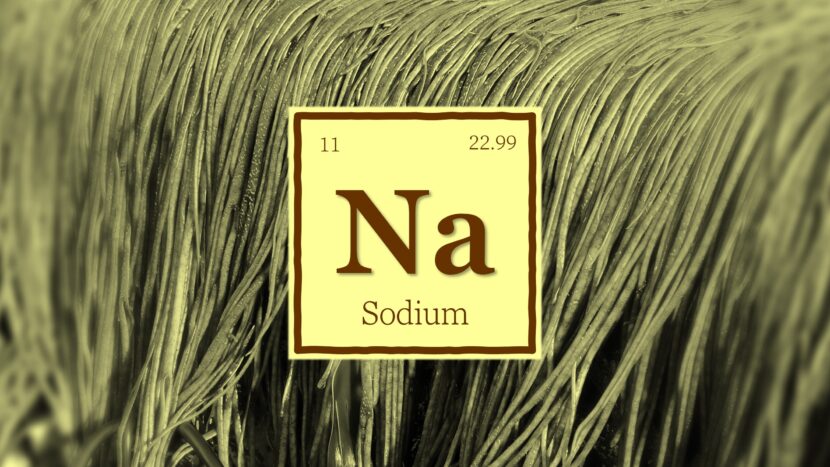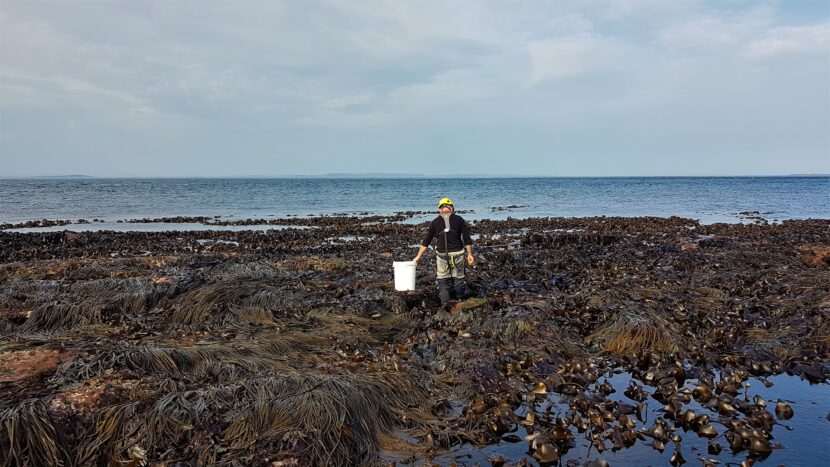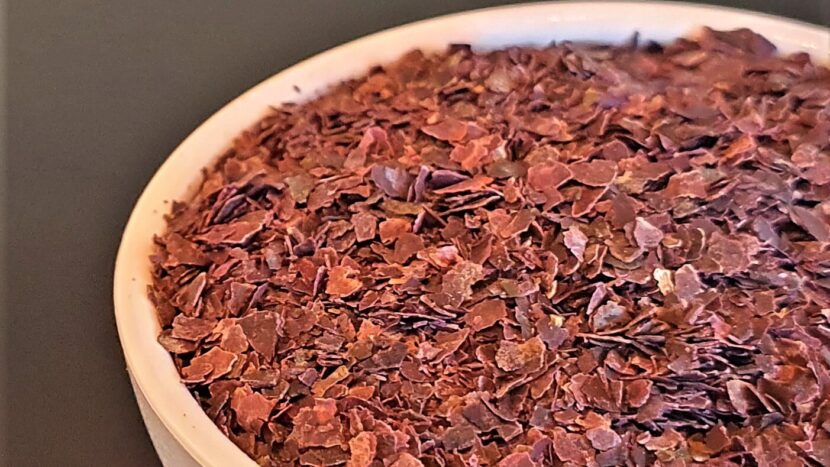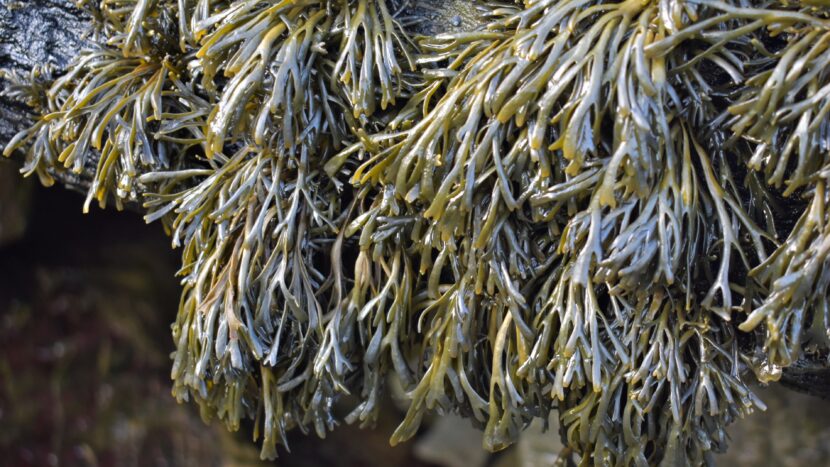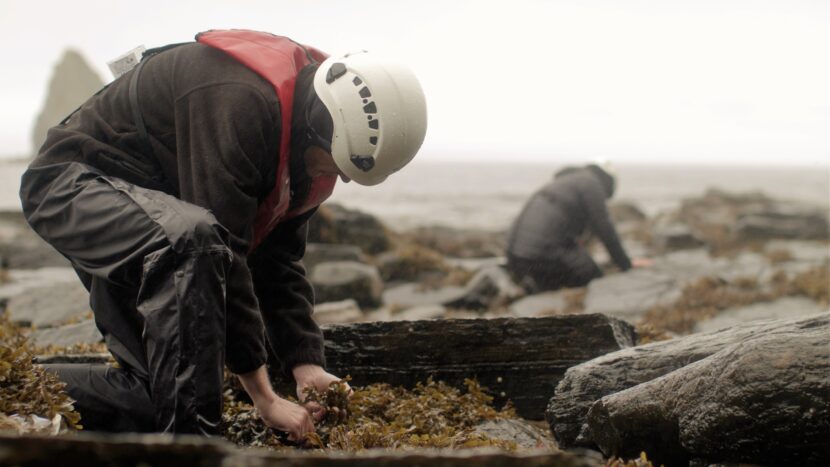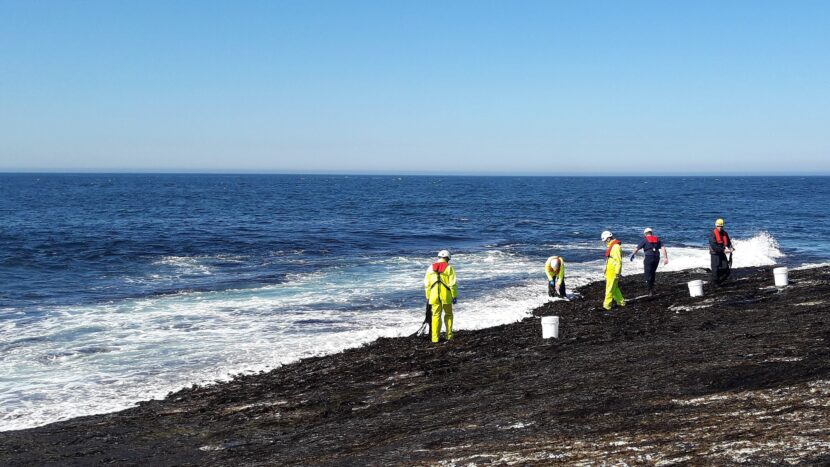Our coast: Keiss

This article by Peter Elbourne is about Horizon Seaweed's harvest site at Keiss and is our latest post on the coastline around Caithness. Keiss – rhymes with peace – has extensive rocky shores that make it ideal for harvesting seaweed, but it also has an interesting history.

The foreshore at Keiss is gently sloping and moderately exposed, making it perfect for seaweed harvesting
The ideal foreshore for sustainable seaweed harvesting
Keiss is typical of much of the shoreline in Caithness. It is on the northern side of Sinclair's Bay, with the southern boundary of our harvest site beginning where the sand transitions to bedrock. The northern edge is at a geo - a narrow cliff inlet formed by millenia of wave action - that is difficult to pass on foot. This area of the site is more exposed and our harvesters target it for picking Atlantic wakame in the spring. Most of the 30 hectares of foreshore is very flat and relatively easy to cross. The distance between the high and low water of spring tides is as much as 200m - a long walk to reach kelp. Indeed, one of the most expansive sections is called Tang Head: a Norse name either deriving from point or seaweed. The shallow gradient means our harvesters need to take care after low water because the rising tide can rapidly cover a lot of ground. Read more about tides in our article covering this topic.

Our Keiss harvest site lies on the north side of Sinclair’s Bay
Credit: Contains Ordnance Survey data, Crown copyright and database right 2014Most of the shoreline here is what we term semi-exposed: it is open to the elements and subjected to wave action, but has enough shelter to support a wide range of species. Large waves can build when gales blow in off the North Sea. In fact, Keiss is a well-known surf spot with a high-quality left-hand break that forms in good swell. This makes it suitable for both experts and beginners, but the beach is rarely crowded. The waves are less reliable than on the famous north coast of Caithness, which is exposed to Atlantic swells.

The long sandy beach to the south of Keiss is famous for surfing
Although we have harvested ten different varieties of seaweed at Keiss over the years, we have mostly used this site to harvest bladder wrack and toothed wrack. These species form a thick canopy across the bedrock in the mid- and low-shore. We have occasionally harvested dulse from the kelps exposed on the strongest spring tides, but wracks account for 85% of production fom Keiss. This site is our go-to harvest location on the east coast of Caithness – we have picked seaweed here on over 200 separate low tides.
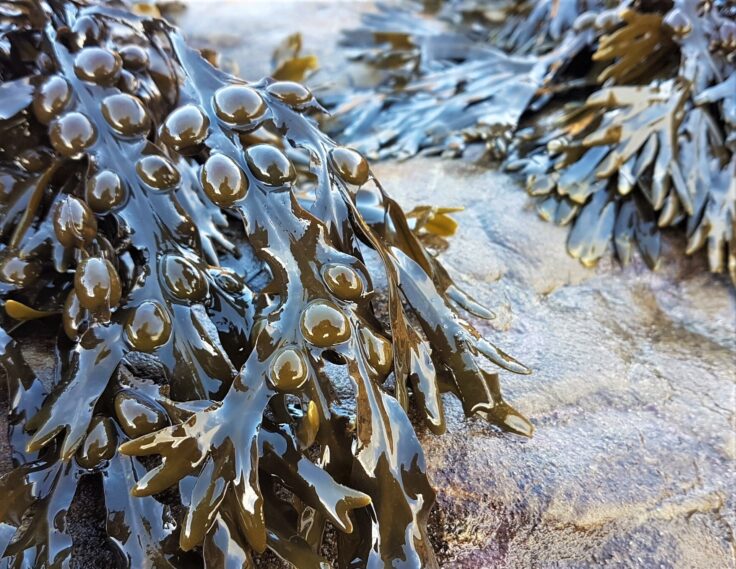
Keiss is one of the best sites for harvesting bladder wrack (Fucus vesiculosus)
Coastline with a fascinating history
Keiss is one of many fishing villages lining the Caithness coastline. There is a sturdy harbour and three storey warehouse, both built around two hundred years ago to take advantage of the ample herring stocks. This industry supported the village community with net making, gutting and packing. The ruins of an ice house can also be seen by the harbour. Crabs and lobsters became the main catch in the early 20th Century. We know from locals that dulse was dried on the village green in years gone by. The harbour was used as a filming location for Netflix series The Crown: an important character met an unfortunate demise (no spoilers!).
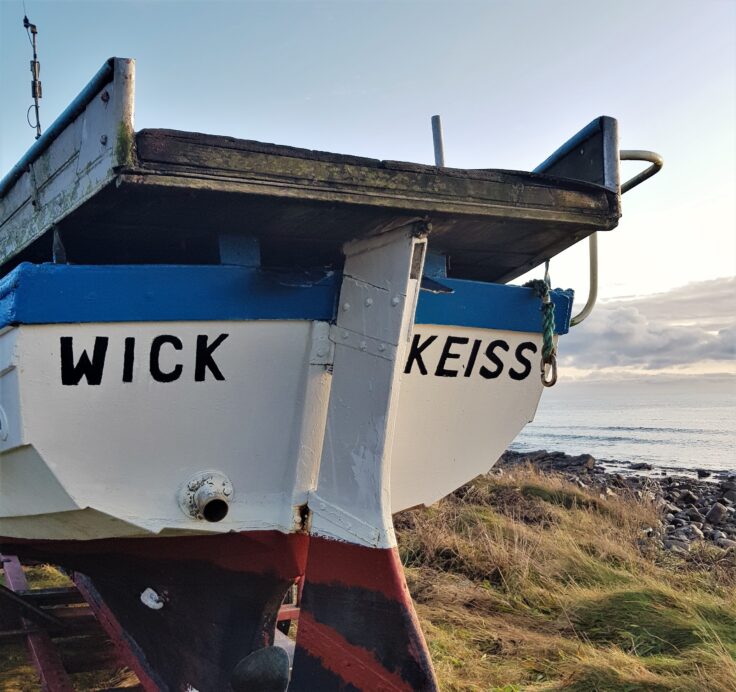
Keiss is a fishing village that was once part of the thriving herring industry in Caithness
The northern part of the site is overlooked by an ancient castle. Keiss Castle was constructed around four hundred years ago, possibly built over an earlier fort; there are several brochs above the beach. It is now partially ruined after part of it fell into the sea, following erosion of the cliffs below. Keiss House was built 150m inland around 1755. The castle is a one kilometre walk from the harbour and provides atmospheric views across to Noss Head the other side of Sinclair’s Bay.

The ruins of Keiss Castle provide a stunning background for harvesting seaweed
In World War II, Caithness hosted RAF squadrons that were able to patrol the North Sea and intercept enemy aircraft and vessels heading to the Home Fleet’s base at Scapa Flow in Orkney. The wide expanses of sand in Sinclair’s Bay were considered vulnerable to invasion, especially from Nazi-occupied Norway. Defences were erected around Keiss, including two types of concrete anti-tank obstacles: large blocks called cubes and flat-topped pyramids called pimples or, more exotically, dragon’s teeth. These can still be seen near the car park for the beach. There are several machine gun pillboxes around Keiss, a short walk from the harbour. More information can be found at the excellent Caithness at War Trails website, developed to highlight the wartime heritage in Wick and Sinclair’s Bay.

Pillboxes, anti-tank devices and other reminders of WWII line the coastline around Keiss
Working out how much seaweed is on a harvest site
One of the critical steps for licencing an area of foreshore for commercial seaweed harvesting is determining how much biomass is on the site. This is no easy task and our team of marine scientists actually made some missteps in the earliest surveys, leading to massive overestimates of seaweed volumes that were corrected through an improved design.
Covering large areas of shoreline is difficult. We first visited the site in 2014 and completed several walkover surveys, which aimed to get an understanding of physical aspects and the variety of species on the shore. If a stretch of shore looked like it would be a viable harvest site, we would then take it through a seaweed biomass assessment.
In our biomass surveys, individual corridors representative of the site were surveyed from the high shore to the low shore. Our marine scientists would start soon after high water, surveying channelled wrack and spiral wrack in the upper intertidal zone. We then worked down the foreshore with the falling tide, placing transects and allocating zones. The biomass of all the target species within this area is then estimated and multiplied across the length of the site. Keiss covers several kilometres of coastline and so both a full survey and partial survey were carried out on different days in 2015.
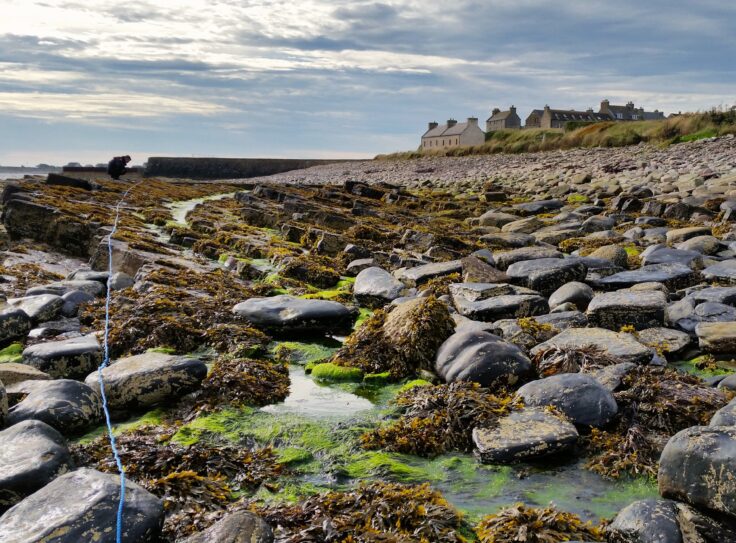
Biomass surveys were conducted at Keiss in 2015 to determine how much seaweed was on the site
The critical tool for a rocky shore survey is a quadrat: a square 50cm across usually made from metal, although we did once have to hastily fabricate one from plastic when we left it back in the office. Randomly placed, a quadrat provides a fixed area for measurement. The method is non-destructive: percentage cover is estimated for smaller species (e.g. channelled wrack) and individual plants of larger species were counted (e.g. kelp). Survey data is converted to biomass using one-off metric analysis completed in 2014: we measured lengths and widths of plants from 17 different species to correlate against fresh weight. Surveys would typically be completed on a dedicated spring tide to maximise the time available. The biomass assessment of one harvest site was many days work when factoring in long travel days and data analysis. Although the flat foreshore at Keiss was easier to survey than other sites, any marine ecology surveys require a lot of careful planning and hard work to be a success.
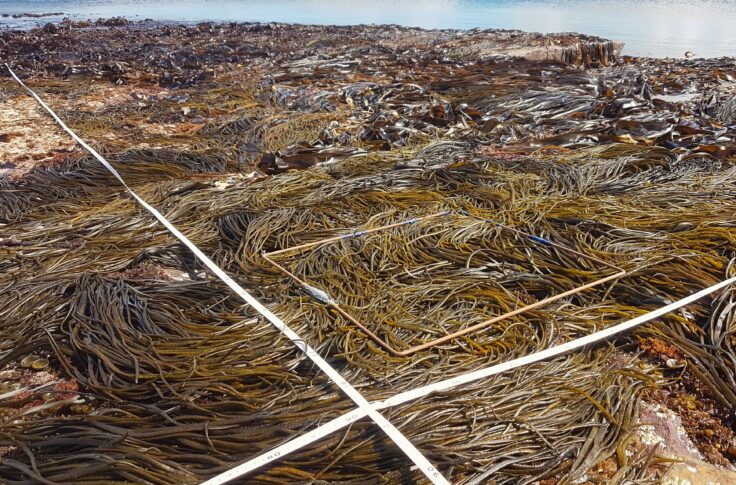
Square quadrats are essential for marine ecology surveys
Our surveys estimated that there were over 1,200 wet tonnes of seaweed on the foreshore at Keiss, with kelp, bladder wrack and toothed wrack accounting for the majority of the biomass. This is approximately 4kg of fresh seaweed in every square metre, although most of that volume will be found on the low shore. Within our sustainable harvesting strategy, our annual quotas are set at 20% of the biomass for each species.
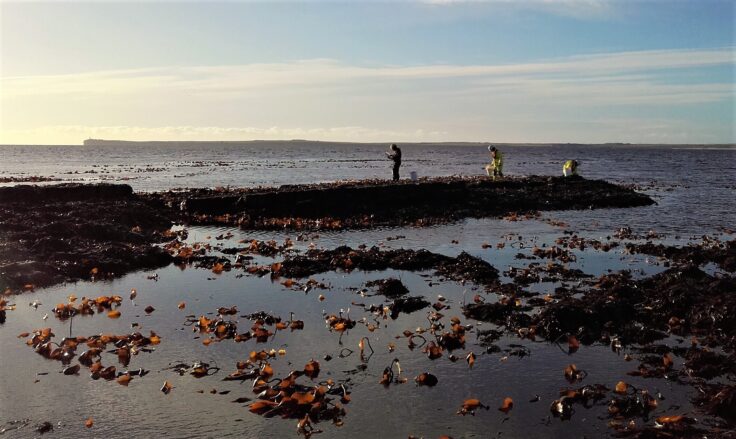
Harvesting seaweed on the low shore at Keiss during a spring tide
One of our favourite places to harvest seaweed
Keiss is a beautiful stretch of shoreline with near-perfect conditions to support a range of species. Please take to time to read the other articles in the Our Coast series: Ness of Duncansby by John O'Groats (8 miles north) and Brough by Dunnet Head (13 miles northwest).
